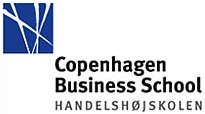No 2005-6: Rating mutual funds
Ken L. Bechmann and Jesper Rangvid
Additional contact information
Ken L. Bechmann: Department of Finance, Copenhagen Business School, Postal: Department of Finance, Copenhagen Business School, Solbjerg Plads 3, A5, DK-2000 Frederiksberg, Denmark
Jesper Rangvid: Department of Finance, Copenhagen Business School, Postal: Department of Finance, Copenhagen Business School, Solbjerg Plads 3, A5, DK-2000 Frederiksberg, Denmark
Abstract: We develop a new rating of mutual funds: the atpRating. The atpRating assigns crowns to each individual mutual fund based upon the costs an investor pays when investing in the fund in relation to what it would cost to invest in the fund’s peers. Within each investment category, the rating assigns five crowns to funds with the lowest costs and one crown to funds with the highest costs. We investigate the ability of the atpRating to predict the future performance of a fund. We find that an investor who has invested in the funds with the lowest costs within an investment category would have obtained an annual risk-adjusted excess return that is approximately 3-4 percentage points higher per annum than if the funds with the highest costs had been invested in. We compare the atpRating with the Morningstar Rating. We show that one reason why the atpRating and the Morningstar Rating contain different information is that the returns Morningstar uses as inputs when rating funds are highly volatile whereas the costs the atpRating uses as inputs when rating funds are highly persistent. In other words, a fund that has low costs one year will most likely also have low costs the following year, whereas the return of a fund in a certain year generally contains only little information about the future return that the fund will generate. Finally, we have information on the investments in different mutual funds made by a small subgroup of investors known to have been exposed to both the atpRating and the Morningstar Rating, i.e. information is provided on how investors use the two ratings. We find that investors have a clear preference for high-rated funds.
Keywords: investor-cost based rating; funds
JEL-codes: G00
49 pages, June 29, 2006
Full text files
7194
Questions (including download problems) about the papers in this series should be directed to Lars Nondal ()
Report other problems with accessing this service to Sune Karlsson ().
RePEc:hhs:cbsfin:2005_006This page generated on 2024-09-13 22:14:14.

